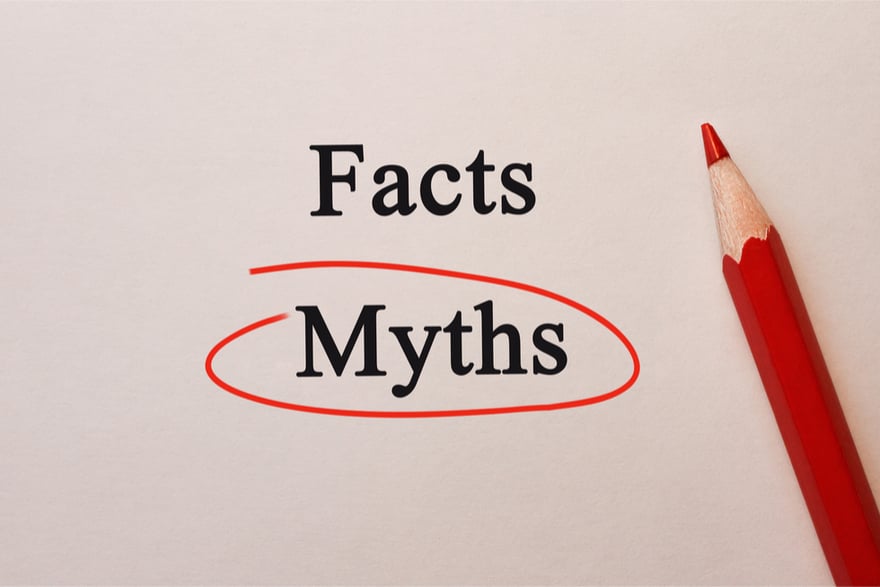Selling on Amazon, you’ve likely run into a lot of people claiming they’re experts. But how much of what you hear is true, and how much is an old wive’s tale? RepricerExpress is here to sift fact from fiction with ten common Amazon myths.
1. Amazon is ‘Retail Apocalypse’
Amazon’s been used as the scapegoat for a number of big retail companies filing Chapter 11 bankruptcies, like Toys R Us, Claire’s, Nine West, Gymboree, and more. But while the marketplace has made things a lot tougher for retailers by presenting a nifty combination of high selection, convenience, and low prices, the companies that have gone under have had unmanageable debt loads from private equity buyouts or ill-timed expansions. Retailers that have been smart have adapted and stuck around.
2. Amazon Employees are Poorly-Paid
According to the pay-tracking company Paysa, the average salary at Amazon is $155,320, which puts it in 77th place. But the bulk of Amazon workers aren’t at the corporate level, where the big bucks are to be had, but in the warehouse. There, they’re paid far less, amounting to a median wage of just $28,445. Making matters worse is a lot of their new warehouses are in urban areas where the cost of living is higher than in suburban or rural areas.
Related: Amazon Statistics
3. It’s Not Fun or Easy Working at Amazon
If you’re a warehouse worker, then you probably don’t say ‘fun’ and ‘Amazon’ in the same sentence. But so far, Amazon has determined that the cost of training new employees isn’t so high that they have to work on their high turnover, adding strength to their workplace reputation as a tough and intense place to be.
4. There are…How Many U.S. Prime Members??
Ever since Prime became a thing in 2005, it’s been tough to judge the exact number of U.S. Prime members. Earlier this year, Jeff Bezos said Amazon had 100 million Prime members worldwide, but that’s globally and not in the U.S. If you ask the Consumer Intelligence Research Partners, they guessed 90 million in the U.S., while Moody’s Investors Service said 85 million was more accurate, with 50 million in the U.S. So, the answer is nobody really knows.
5. How Much Does Amazon Sell on Its Marketplace?
It took them 24 years, but Amazon cracked Fortune 500’s top 10 list by sliding into the 8th position. This is because they’ve achieved sales at $135 billion, which could nearly double in just two years.
6. It’s Primarily Young People Shopping on Amazon
Amazon’s brand and marketing inherently lends itself to the younger crowd, but there are plenty of older folks shopping there, too. Cowen showed that 90% of people aged 18-55 purchased from Amazon, but the 55+ crowd was close behind with 82% buying from there, too.
7. Amazon Has the Lowest Prices
This one’s a bit tough to establish as either truth or myth because of dynamic repricing algorithms that can causes prices to change up to every 15 minutes. It becomes even murkier when you think of their prices in terms of value — while something might not be the cheapest, it could be in better condition or have free, fast shipping make up for the costs of going elsewhere.
8. Alexa is on Fire
It seems like you can’t swing a dead cat without hitting Alexa, but just how popular is she? Almost a third of people have used voice assistants to either find a product or purchase it, while those sales have totalled $2 billion out of a total $2.53 trillion of all retail sales. And with Apple and Google having strong presences, it’s too soon to tell if Alexa really is all that commanding.
9. Amazon is the King of Marketing
Forrester found that its clients spent a whopping 45% of their budgets on holiday marketing for Amazon, and with good reason: Amazon managed to get 76% of online holiday shoppers in 2017. When it comes to Amazon’s ad revenue, things are expected to crest $2 billion for the first time in company history. So yeah, we’d say that Amazon is right up there with Google and Facebook in terms of marketing power.
10. They’re Dominant in Ecommerce Sales
When it comes to U.S. retail sales, Amazon only got a 4% share of the pie. But if you narrow it down to ecommerce sales, their portion got a whole lot huger with Amazon taking 44% of all ecommerce sales in the U.S. If they continue to grow at their current pace, they’ll catch up to Walmart in just two or three years’ time.
Final Thoughts
When it comes to point seven, you can see firsthand just how much of an impact dynamic repricing makes on your bottom line. There’s no reason for you to set your prices and forget about them, especially when RepricerExpress is available to take you to the next level. To start seeing a difference right away, hop on board and kick things off with a 15-day free trial.



